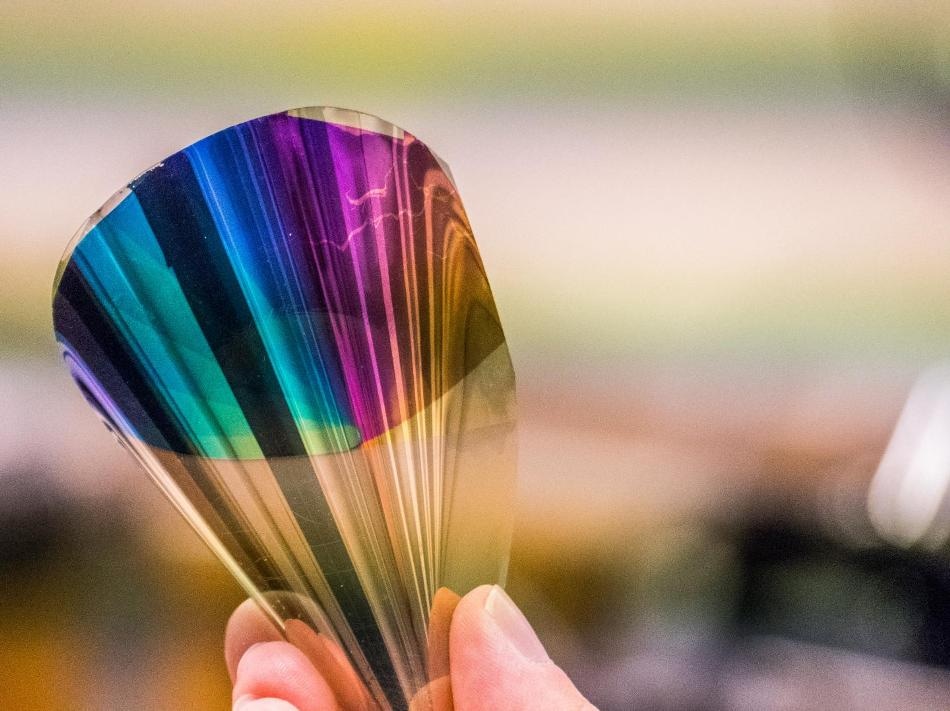Oct 17 2016
 Chalmers' e-paper contains gold, silver and PET plastic. The layer that produces the colors is less than a micrometer thin. (Credit: Mats Tiborn)
Chalmers' e-paper contains gold, silver and PET plastic. The layer that produces the colors is less than a micrometer thin. (Credit: Mats Tiborn)
Researchers from Chalmers University of Technology have developed the foundation for a new electronic paper. A material that is less than a micrometer thin, flexible, and provides all of the colors that a standard LED display gives. However, it requires ten times less energy than a Kindle tablet.
Their results have been published in the high impact journal Advanced Materials.
During an experiment, Andreas Dahlin, Assistant Professor at Chalmers University of Technology, and his PhD student Kunli Xiong placed conductive polymers on nanostructures. It was then they discovered that this combination would be ideally suited to producing electronic displays as thin as paper.
The results were published a year later.
The ‘paper’ is similar to the Kindle tablet. It isn’t lit up like a standard display, but rather reflects the external light which illuminates it. Therefore it works very well where there is bright light, such as out in the sun, in contrast to standard LED displays that work best in darkness. At the same time it needs only a tenth of the energy that a Kindle tablet uses, which itself uses much less energy than a tablet LED display.
Andreas Dahlin, Assistant Professor, Chalmers University of Technology
It relies upon the ability of the polymers to manipulate how light is absorbed and reflected. The polymers that cover the whole surface guide the electric signals throughout the full display and produce images in high resolution. Although the material is still not ready for application, the foundation is now available.
The team has examined and built a small number of pixels. These use the same red, green and blue (RGB) colors that can generate all of the colors in basic LED displays. The results so far have been promising. Now what remains to be done is build pixels that cover an area as big as a display.
“We are working at a fundamental level but even so, the step to manufacturing a product out of it shouldn’t be too far away. What we need now are engineers”, says Andreas Dahlin.
Today, one hurdle is there - gold and silver is present in the display.
The gold surface is 20 nanometres thick so there is not that much gold in it. But at present there is a lot of gold wasted in manufacturing it. Either we reduce the waste or we find another way to reduce the production cost.
Andreas Dahlin, Assistant Professor, Chalmers University of Technology
Andreas Dahlin envisions that the ideal application for the displays will be brightly-lit places such as in public places or outside to exhibit information. This could decrease the energy consumption and at the same time substitute information screens and signs that are presently not electronic today, with additionally flexible ones.